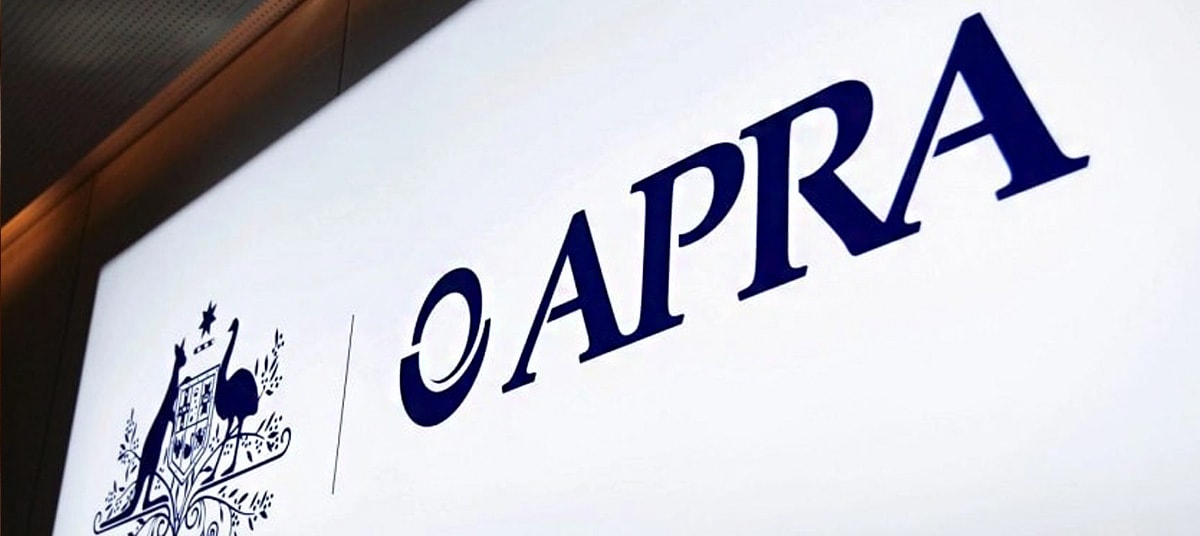
From 1 February next year, banks must limit high debt-to-income ratio to 20 per cent of new lending.
The Australian Prudential Regulation Authority (APRA) is bringing in new lending curbs for high debt-to-income (DTI) mortgage lending to “pre-emptively contain a build-up of housing-related vulnerabilities in the financial system”.
From 1 February, banks must limit home lending of six times income (or more) to 20 per cent of their new mortgage lending.
The limit will apply separately to bank owner-occupier and investor lending.
Under the limit, each bank will be able to lend, on a quarterly basis, up to 20 per cent of new owner-occupier loans and up to 20 per cent of new investor loans to borrowers with a DTI ratio greater than or equal to six.
It will not apply to bridging loans for owner-occupiers and loans for the purchase or construction of new dwellings in order to allow for “the smooth functioning of property transactions and avoid constraining incentives for the supply of new housing”.
The new limit will not apply to non-bank lenders. However, APRA said it closely monitors any “spillover effects”, including shifts of lending activity toward non-ADI lenders, to ensure the limit is achieving the intended objective of managing system-wide build-ups in risks.
“If needed, APRA has powers to apply macroprudential measures to non-APRA regulated lenders, where these lenders are materially contributing to financial stability risks,” APRA noted (although it has not used them to date).
What does the DTI limit aim to achieve?
The DTI limit is intended to prevent an “unsustainable rise” in household indebtedness during episodes of heightened risk, while not overly constraining credit supply.
Currently, around 6 per cent of new mortgages have a DTI ratio at or equal to six.
Across all banks, the share of new lending to investors with high DTI increased from 8 per cent to around 10 per cent of new lending over the year to the September quarter 2025.
While some increase in higher DTI lending is expected as lower interest rates lift borrowing capacity, APRA believes the limit will manage the possible build-up of risk in housing credit by setting guardrails for the growth of new high DTI loans by individual lenders.
Only a small number of ADIs are expected to be near the limit for high DTI investor lending at this stage.
APRA said the move is expected to have greater impact on investors, who typically borrow at higher DTI ratios than owner-occupiers.
APRA said the change was needed as it has observed a “pick-up in some riskier forms of lending over recent months as interest rates have fallen, housing credit growth has picked up to above its longer-term average and housing prices have risen further”.
While high DTI lending is still at a low level, the regulator noted it has started to pick up, albeit driven by high DTI loans to investors.
It said it expected this to increase further in this part of the cycle and that “already high household indebtedness” could increase further.
Moreover, when combined with “a resilient labour market”, APRA said these trends suggest a shift in the financial risk cycle and a potential build-up of vulnerabilities that could undermine banking sector and household financial resilience if left unchecked.
It said it was therefore acting now to “contain the potential build-up of housing-related risks from high DTI lending”.
Chair John Lonsdale said APRA is not prepared to wait for housing-related vulnerabilities to build up before acting.
“APRA’s macroprudential policy tools are designed to mitigate financial stability risks at a system-level. One of the key structural risks to system stability that APRA has long been concerned about is high household indebtedness. Rising indebtedness has in the past often been associated with an increase in riskier lending and rapid growth in property prices,” Lonsdale said.
“At this point, the signs of a build-up in risks are chiefly concentrated in high DTI lending, especially to investors. By activating a DTI limit now, APRA aims to pre-emptively contain risks building up from this type of lending and strengthen banking and household sector resilience.
“While strong investor activity can amplify housing lending and price cycles that can impact financial stability, we are not yet seeing signs of the broad-based build-up of housing vulnerabilities, including a deterioration in lending standards that we have seen in previous episodes of strong investor activity.
“Although broader risks are contained, we have seen in the past that they can build rapidly when interest rates are low or declining, borrowers extend themselves and competition among banks for new mortgage lending intensifies, which can lead to easing lending standards. We will consider additional limits, including investor-specific limits, if we see macro-financial risks significantly rising or a deterioration in lending standards.”
He added that while the lending limit will apply to all ADIs, there will be some proportionate treatment for smaller ADIs.
The regulator said it would be actively monitoring whether the DTI limit “is working as intended” and, if appropriate, may adjust settings in future.
APRA’s other active macroprudential policy tools, the mortgage serviceability buffer and counter-cyclical capital buffer, remain the same (three per cent and one per cent of risk-weighted assets, respectively).
What’s driven the move?
The move comes after APRA flagged that it had been talking to lenders about bringing in new limits. Earlier this month, the regulator warned that high household debt and rising higher-risk lending were heightening vulnerabilities in the financial system.
APRA’s System Risk Outlook noted that investor lending had hit record levels in the September quarter, amid falling borrowing costs and low vacancy rates.
APRA warned that this investor activity – combined with an expected rise in high loan-to-valuation ratio (LVR) loans under the government’s expanded 5 per cent Deposit Scheme and intensifying competition among lenders for market share – could create pressure to loosen underwriting standards and increase lenders’ risk appetite.
At the time, it revealed it had been working with lenders on the practicalities of introducing lending limits for residential mortgages – such as caps on high DTI, investor, or interest-only lending – to ensure these measures can be deployed quickly if required.
However, when announcing the new limits on Thursday (27 November), the regulator revealed it had “examined closely whether broader investor limits are warranted”, but had not “observed signs of a material build-up in vulnerabilities” (such as those during previous episodes of strong investor activity, such as in 2014).
Nevertheless, APRA said it would “continue to assess carefully the evolving risk environment related to housing lending and will consider additional limits, including investor-specific limits, if macro-financial risks rise significantly or lending standards deteriorate”.
Noting the move, the CEO of the Mortgage & Finance Association of Australia (MFAA), Anja Pannek, said the decision was “deliberately pre-emptive rather than reactive” - and that she expects the short-term impacts of APRA’s decision to be “modest”.
Pannek added: “Once the cap comes into effect, the MFAA would expect transparent, consistent lender policy settings across all distribution channels.
“Brokers need to be able to support borrowers navigating financing their home or investment property, so it’s important they can do so in an informed way and that consumers receive the same opportunities, regardless of channel,” she said.
The MFAA CEO continued: “The MFAA supports sensible, risk-based regulation that maintains financial system stability, whilst ensuring consumer choice and competition is maintained across the mortgage market."
'A very blunt tool': FBAA
However, Finance Brokers Association of Australia (FBAA) regulatory compliance specialist David Carson warned that this may introduce unintended consequences.
“This is a very blunt tool that has potential to hurt some groups more than others. APRA has effectively decided you can’t live in a home that costs more than six times your current income unless you have a very large deposit,” Carson said.
“A household with an annual income of $100,000 would be restricted to a loan of $600,000. With national median property prices closing in on the $900,000 mark these rules are definitely going to bite hardest on those seeking to enter the market or looking to upgrade if they don’t have substantial equity.
“It poses a very real risk that APRA may be putting unnecessary barriers in place for aspiring homeowners.
“Aspiring homeowners were recently given some encouragement with the expansion of the 5 per cent deposit scheme, allowing more prospective homeowners to move into the market sooner. The APRA debt-to-income ratio cap shifts the power back to those with large deposits.
“The six times limit also overrides the responsible lending rules and consideration of whether a consumer has capacity to service a higher loan based on their expectations of future wage growth, how they manage their household expenses and how much capacity they have to service any proposed loan.
“The obvious question is how banks will determine the lucky 20 per cent they allow to exceed the six-times limit.
“How will that cohort be chosen by the banks?
“This has the very real potential to throttle the capability of the ordinary family borrower to buy a property and realise the benefits of home ownership.
“It is a material intervention from APRA, reminiscent of other interventions, including the 3 per cent serviceability buffer on home loans and back in 2014 and 2017 respectively, placing limits on banks for the proportion of investor and interest-only loans they could hold on their books.
“It is usually the case that those most heavily affected by these actions are the ones closest to the thresholds. In this case, aspiring homeowners with lower household income and smaller deposits.
“APRA says it has data that suggests this might have a bigger impact on investors than home owners although it is hard to see this being the case. APRA has also said there aren’t many lenders near the 20 per cent threshold, leading them to believe the immediate effects may be limited.
“With legitimate questions about how accurate their modelling and how robust the data is that these new rules are based on, the value of APRA’s new approach is open to question.”
[Related: APRA warns of growing risks in housing market]

